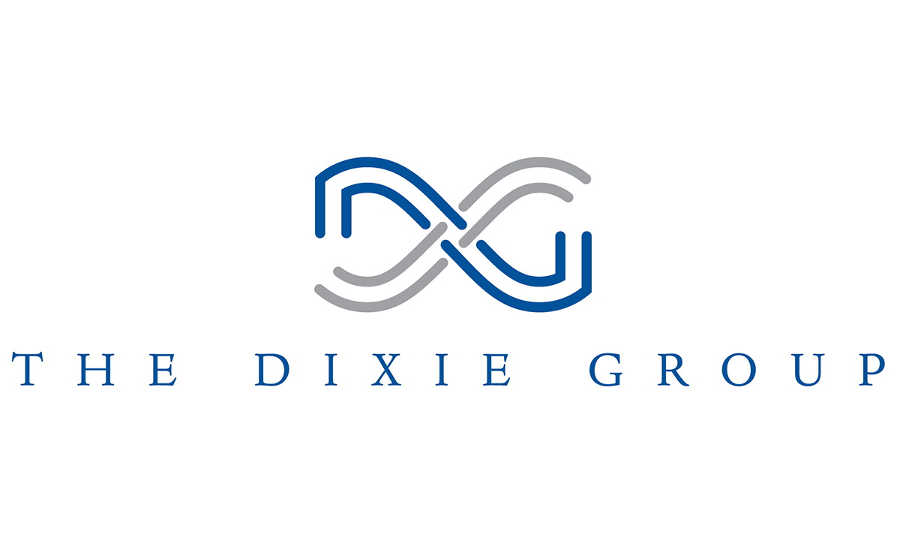The Dixie Group recently reported financial results for the year ending December 31, 2016. For 2016, the company had net sales of $397 million, a 5.9% decrease vs. net sales in 2015 of $422 million. In 2016 the company registered a loss from continuing operations of $5.2 million or $0.33 per diluted share.
“Our carpet sales for 2016 were down 6% from 2015, on a comparable 52 week basis, while the industry, we believe, was down in the low single digits,” said Daniel K. Frierson, chairman and CEO. “In the fourth quarter, our total carpet sales were down 7.7% while the industry was flat. Sales of our residential products were down approximately 3% on a comparable 52 week basis in 2016 vs. 2015 while the industry was down similarly. Our commercial product sales on a year over year basis were down over 11% while the industry was down slightly, also on a 52 week equivalent basis.”
For the year, gross profit was 24% of net sales, a decline from 2015’s 25.1% gross profit percentage. The decline in margins in both the first and fourth quarters were impacted by the reduction in inventories by $17.9 million during 2016, thus negatively affecting cost absorption. Selling and administrative expenses for the year were 24.4% of net sales as compared to 23.8% for the prior year, despite having dropped the absolute levels of spending by $3.4 million from 2015 to 2016.
“In order to service our customers, we have increased our inventory levels over the last few years as we were restructuring the plants,” said Frierson. “Now, however, we are operating more efficiently and have not needed these levels of inventory to properly service our customers. Now that our inventories are back in line, we anticipate the first quarter to have production above sales. During the fourth quarter of 2016, we increased inventory reserves as we dropped older product lines and reduced the market price of our distressed goods resulting in significant negative inventory expenses during the quarter.”
Capital equipment acquisitions, including those funded by cash and financings, were $5.3 million for the year. Depreciation and amortization for the year was $13.5 million. Capital expenditures for 2017 is expected to be approximately $8 million and depreciation and amortization of approximately $13.3 million. Debt declined by $17.7 million to $108.4 million at the end of the year.
“Despite this difficult year from a profit perspective, we have made several significant changes to improve our results in the future,” said Frierson. “We completed our restructuring earlier in the year, setting the stage for a more productive manufacturing environment. This completes the separation of our east coast commercial and residential facilities. Our claims expense has declined significantly as our workforce training has taken effect, improving our quality. We refinanced our debt, pushing out the maturity until 2021. We have reduced our inventory to levels in line with our sales and reflecting the improvements in reduced waste and shorter throughput times.
“In the coming years, the housing market will be in the middle of two massive demographic waves, millennials and baby boomers, with both groups driving demand for at least the next decade. This trend should provide steady growth in the floorcovering market. We are particularly pleased with the growth in single family housing and the rate of existing home sales. We plan to capitalize on this opportunity while recognizing the dramatic change in the flooring marketplace as hard surface products have grown significantly faster than soft surface products over the last several years. Therefore, we are entering into the hard surface market through several initiatives in both our residential and commercial brands.
“We have anticipated modest sales growth for the industry in 2017 as we have put together our plans for the year. Our floorcovering sales and orders for the first 9 weeks of the quarter are both up approximately 8%. Our total sales are up just under 6% over the same period in 2016; the difference as compared to our overall sales is due to our processing sales being down significantly as we have diverted our yarn production from external sales to internal consumption. We continue to be focused on cutting costs through select investments, such as the ongoing project to bring our beck dying in Georgia back in house in our existing Colormaster facility. This and other projects are designed to improve our cost structure while we pursue market opportunities in this slower growth environment. We look forward to 2017 with a continued emphasis on improving our results and providing beautiful flooring products to our customers.”
For more information, visit www.thedixiegroup.com.

Report Abusive Comment